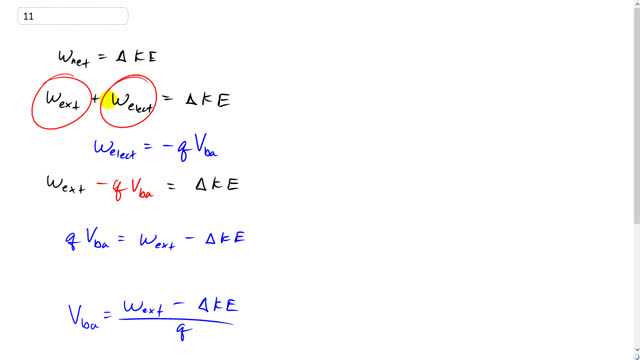
The work done by an external force to move a charge from point A to point B is . If the charge was started from rest and had of kinetic energy when it reached point B, what must be the potential difference between A and B?

In order to watch this solution you need to have a subscription.
This is Giancoli Answers with Mr. Dychko. The net work done on any particle is equal to its change in kinetic energy. And the net work done in this case will be the work done by the external force plus the work done by the electric field. And so that's gonna equal change in kinetic energy. Work done by an electric field is negative of the charge times the potential difference between the initial point A and the final point B. And we'll substitute that in for W electric, here. Then we'll take this to the left side, making it a negative delta KE, and take this to the right side making it a positive qV ba. Then switch the sides around. And we get qV ba equals work external minus change in kinetic energy, then divide both sides by q, and you get the potential difference. That's the external work minus change in kinetic energy divided by the charge. That's 15 times 10 to the negative four Joules of work done minus the 4.82 times 10 to the negative four Joules change in kinetic energy divided by negative 6.5 times 10 to the minus six Coulombs of charge, which gives about negative 157 volts as the potential difference.